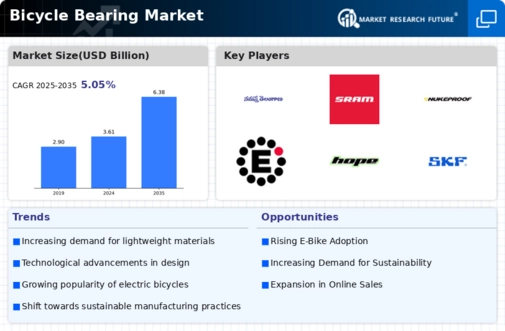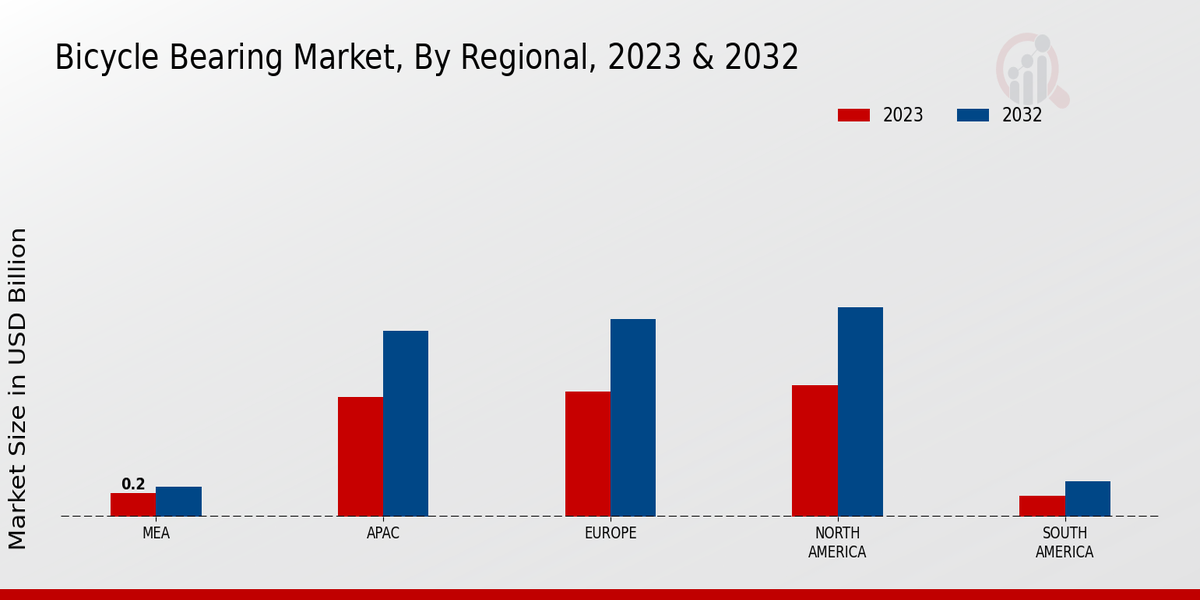Market Growth Projections
The Global Bicycle Bearing Market Industry is poised for substantial growth, with projections indicating a market size of 3.61 USD Billion in 2024 and an anticipated increase to 6.38 USD Billion by 2035. This growth trajectory suggests a robust compound annual growth rate (CAGR) of 5.31% from 2025 to 2035. Such figures underscore the increasing relevance of bicycle bearings in the broader context of the cycling industry. The anticipated growth is likely driven by various factors, including rising bicycle sales, technological advancements, and shifting consumer preferences towards sustainable transportation.
Growing Demand for Bicycles
The increasing global demand for bicycles is a primary driver of the Global Bicycle Bearing Market Industry. As urbanization accelerates and environmental concerns rise, more individuals are opting for bicycles as a sustainable mode of transportation. This shift is evident in cities worldwide, where cycling infrastructure is being enhanced. In 2024, the market is projected to reach 3.61 USD Billion, reflecting the growing popularity of cycling. The trend is expected to continue, with the market anticipated to expand significantly, potentially reaching 6.38 USD Billion by 2035, indicating a robust growth trajectory.
Rising Health Consciousness
The growing awareness of health and fitness among the global population is significantly influencing the Global Bicycle Bearing Market Industry. As more individuals recognize the health benefits of cycling, there is an uptick in bicycle purchases and usage. This trend is particularly pronounced in urban areas, where cycling is promoted as a viable alternative to sedentary lifestyles. The increase in bicycle usage directly correlates with the demand for high-quality bearings, which are essential for optimal performance. This shift in consumer behavior is expected to contribute to the market's growth, aligning with the overall expansion projected through 2035.
Government Initiatives and Support
Government initiatives aimed at promoting cycling as a sustainable transportation option are bolstering the Global Bicycle Bearing Market Industry. Various countries are implementing policies to enhance cycling infrastructure, such as dedicated bike lanes and public bike-sharing programs. These initiatives not only encourage cycling but also stimulate demand for bicycles and their components, including bearings. As governments invest in cycling-friendly environments, the market is likely to experience significant growth. This supportive regulatory landscape is expected to play a crucial role in achieving the projected market size of 6.38 USD Billion by 2035.
Environmental Sustainability Trends
The increasing emphasis on environmental sustainability is driving the Global Bicycle Bearing Market Industry. As consumers become more environmentally conscious, there is a notable shift towards eco-friendly transportation options, including bicycles. This trend is supported by the growing awareness of the carbon footprint associated with motor vehicles. Consequently, the demand for bicycles, and by extension, bicycle bearings, is on the rise. Manufacturers are responding by developing sustainable bearing solutions, which further aligns with consumer preferences. This shift is likely to contribute to the market's growth, reflecting broader societal changes towards sustainability.
Technological Advancements in Bearings
Technological innovations in bearing design and materials are propelling the Global Bicycle Bearing Market Industry forward. Manufacturers are increasingly adopting advanced materials such as ceramics and high-performance polymers, which enhance durability and reduce friction. These advancements not only improve the overall performance of bicycles but also contribute to a smoother riding experience. As consumers become more discerning about quality, the demand for high-tech bearings is likely to rise. This trend aligns with the projected CAGR of 5.31% from 2025 to 2035, suggesting a sustained interest in innovative bearing solutions.














